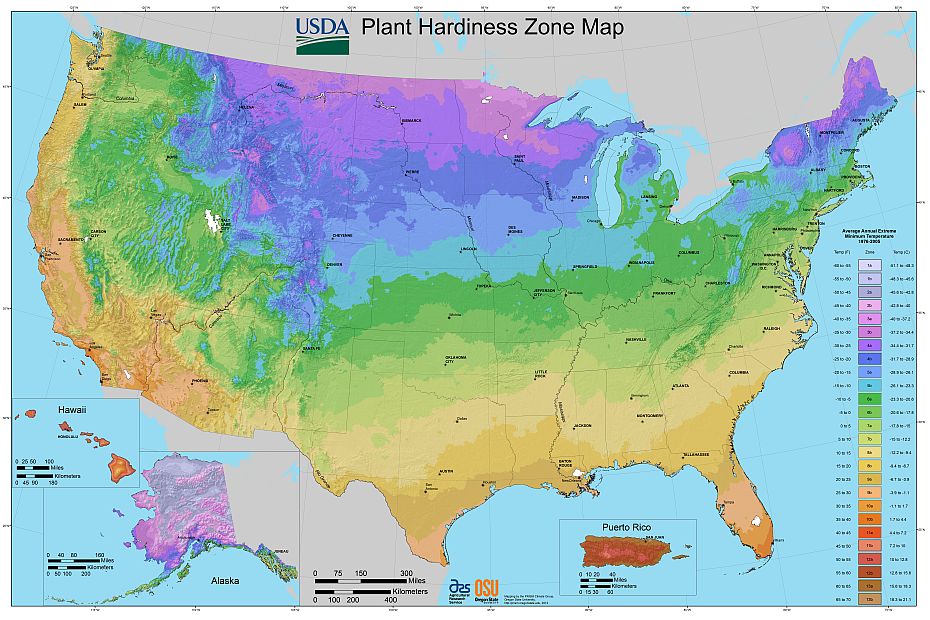
In 1960, the United States Department of Agriculture created the USDA Hardiness Zone map. It is comprised of 13 growing zones that cover the entire United States.
The USDA revised the map in 1965, the American Horticultural Society revised it again in 2003 and the Arbor Day Foundation put out a new one in 2015. The USDA revised and published the latest (this is the one our zone finder uses) in November 2023.
What’s important to understand is that each growing zone is defined by its coldest annual temperature. So, when you purchase a plant with a tag claiming it is “hardy to zone 7,” for instance, that plant may not survive areas of the country that receive winter temperatures colder than 0 degrees Fahrenheit.
While the USDA zone map is a boon for home gardeners in most of the country, not all of us live in areas with winter, let alone freezing cold ones. Although cities such as Las Vegas, Tucson and Phoenix, for instance, occasionally have frost and even snow, they more often than not experience mild winter temperatures.
That’s where the Sunset Climate Zones come in handy. Created by the folks at Sunset magazine, these zones take into account:
“the total climate: length of growing season, timing and amount of rainfall, winter lows, summer highs, wind, and humidity.”
Desert gardeners, for instance, learn quickly not to depend on plant tags that recommend “full sun” for a plant that will in all likelihood fry in full desert sun and, if by some small chance a plant tag also mentions the Sunset zone, it’s considered a blessing.